Rachelle Medina

As the artist’s Fundacion Sansó bestows an educational grant to his alma mater, the UP College of Fine Arts, we recall his formative years as a UP student
Aside from being the oldest art institution in the country, the University of the Philippines-College of Fine Arts (UPCFA) has educated some of the country’s best-known artists—Fernando Amorsolo, Carlos “Botong” Francisco, Jose Joya, Jr., Bencab, and Vicente Manansala, to name a few. It is also the alma mater of the Filipino-Spanish painter and Presidential Medal of Merit Awardee Juvenal Sansó.

It’s no wonder his Fundacion Sansó has chosen the institution, his first art school, to give back to—proceeds for the Leo Abaya Thesis Grant were bestowed to UPCFA through UPCFA Dean Marc San Valentin and Dr. Dayang Yraola last February 24, 2023, for the research and development of thesis projects in the college.
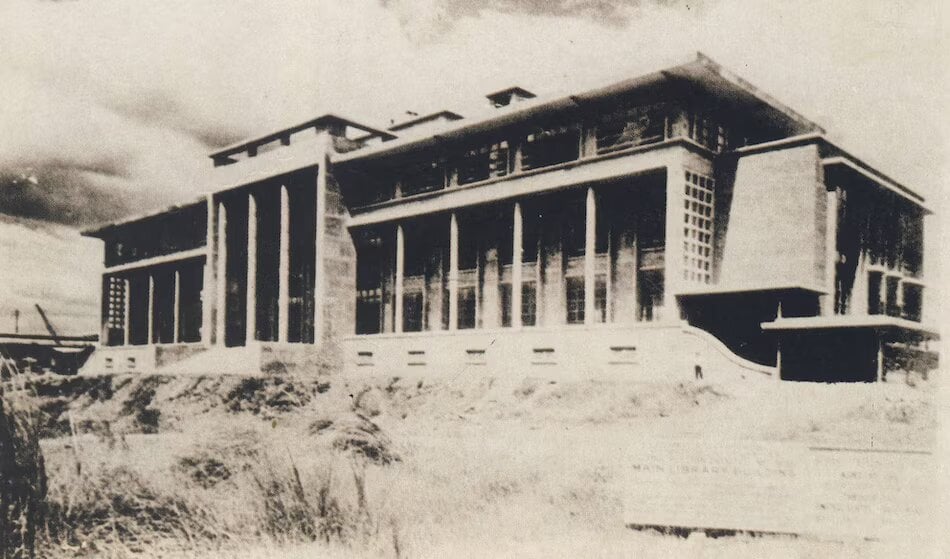
This is not the first time Sansó made a donation to the University, says Fundacion Sansó director Ricky Francisco, as the artist has done so discreetly in the past. It has also been documented in Duffie Hufana Osental’s book Sansó: An Introduction, and from several of the artist’s letters, that as Sansó was a student who subsisted on stipends while studying abroad, it was his consistent wish to establish a fund for art students. This thesis grant is part of this gesture, alongside a scholarship stipend fund that is currently running under Fundacion Sansó for other schools.

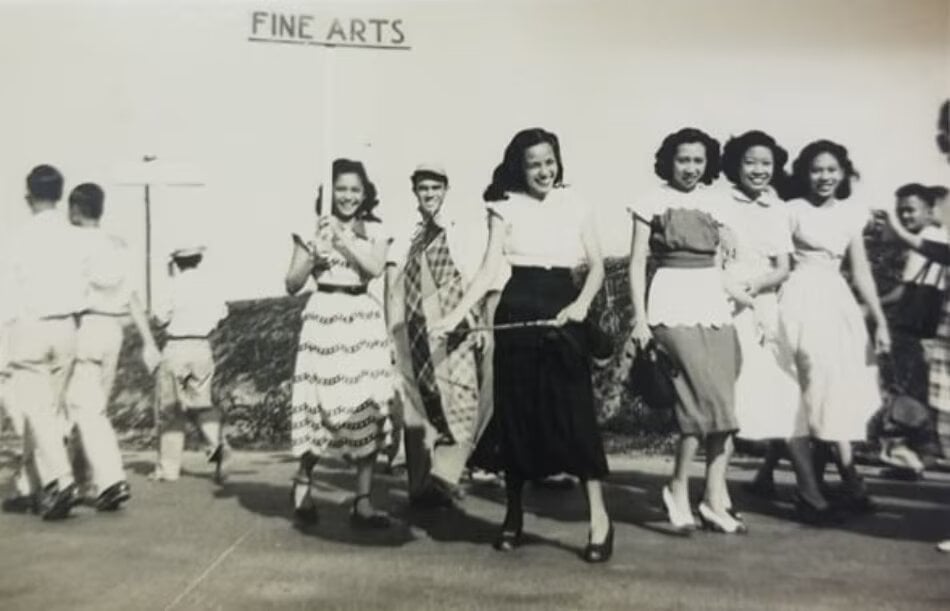
This thesis grant is named after Leo Abaya, artist, production designer, professor, and mentor of undergraduate and graduate students at UPCFA. Abaya passed away at the height of the pandemic.

Francisco discussed the project with Abaya when they were judges at the Metrobank Art and Design Excellence competition (MADE) four years ago. The latter suggested a grant for thesis research and production. He said that while advising the students, he observed that many of their ideas rarely came into fruition due to lack of funds.
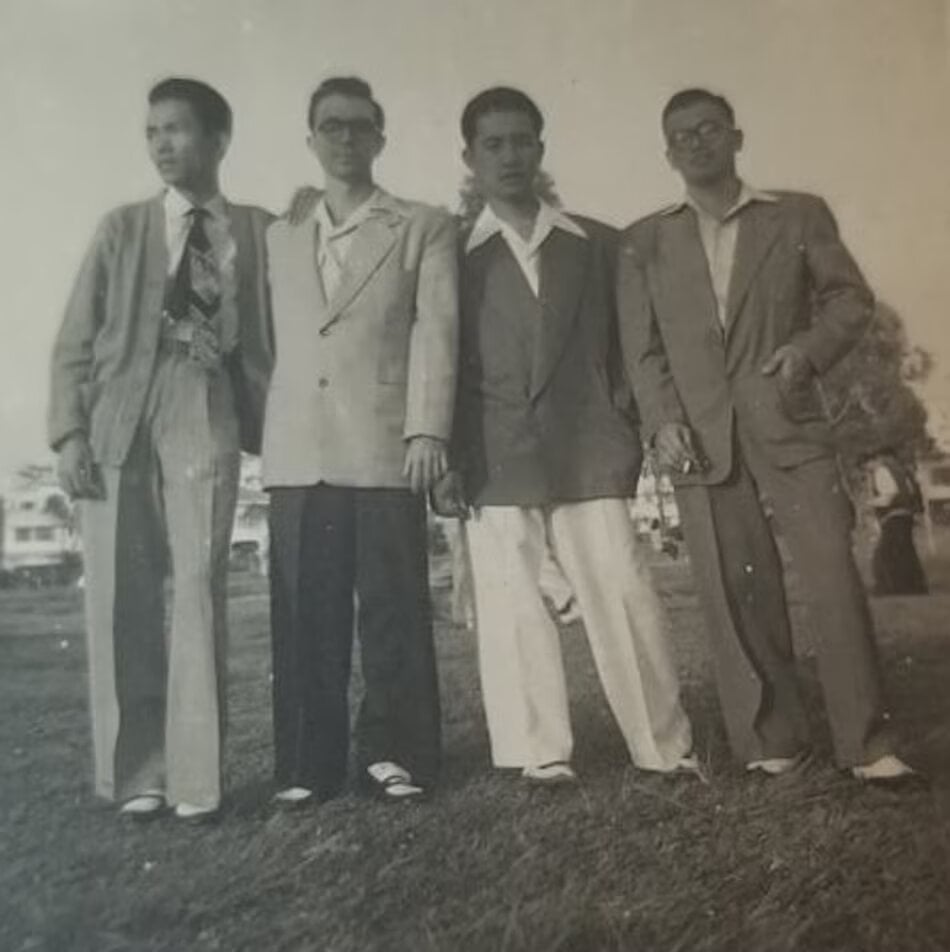
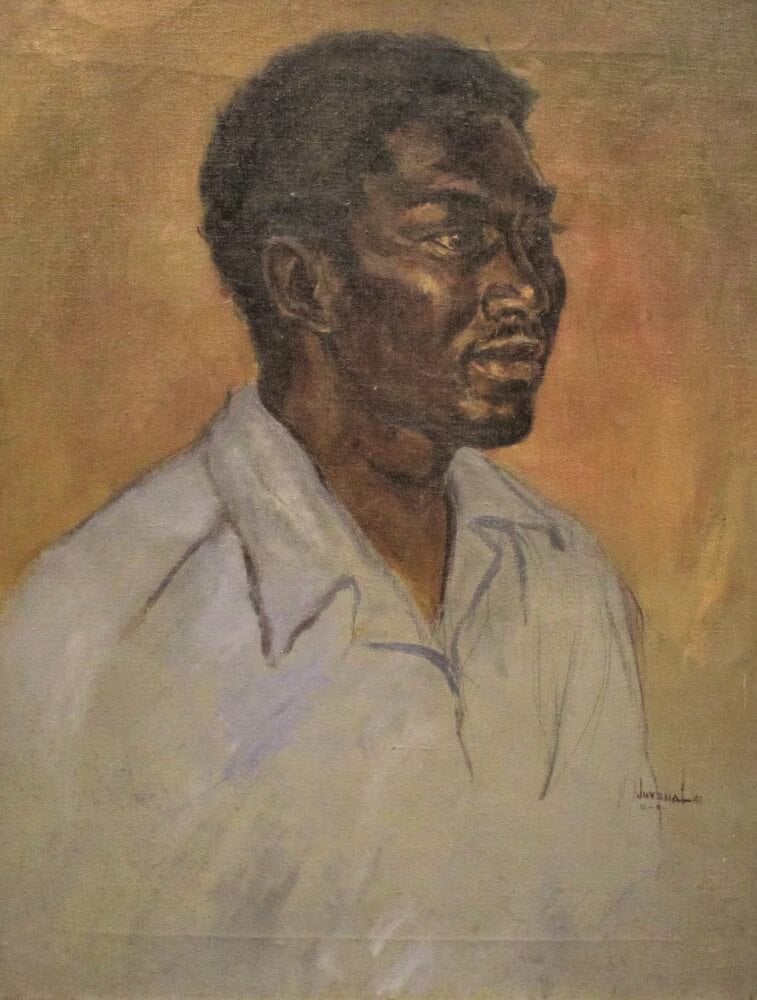
The beginnings of this project stems from Juvenal Sansó’s education in postwar UP. After being tutored in art by Alejandro Celis (Sansó was homeschooled, an unusual practice back then), he enrolled as a special student at UP School of Fine Arts—the college’s former name—in the late 1940s. During this period, Sansó felt that he needed to work harder than his classmates, often erasing and redrawing his lines until the paper tore up. Despite this, Sansó recalls his early years as a UP student with much fondness.
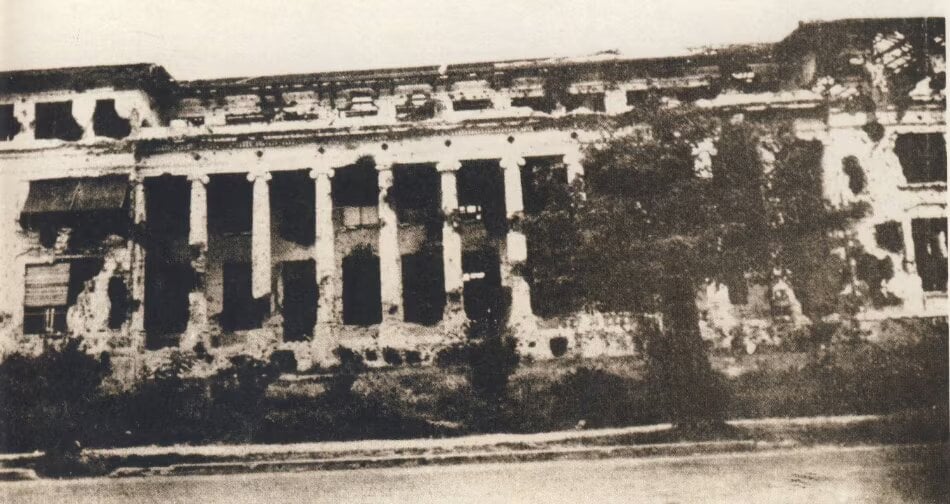
Seeing the new building of the UP College of Fine Arts today, it is hard to imagine the raw, unpaved Diliman campus of the 1940s to the 1950s. In a caption for one of his student photos, Sansó writes a description of his fine arts class’s “nomadic” existence on campus: “As UP Fine Arts students, we were the original ‘boat people’ of the university or perhaps the ‘boot people’ as we were booted out from one neo-shanty on campus to another, ending up in the high school and the upper floor of the Main Library. The brave new world had its compensations under duress.”
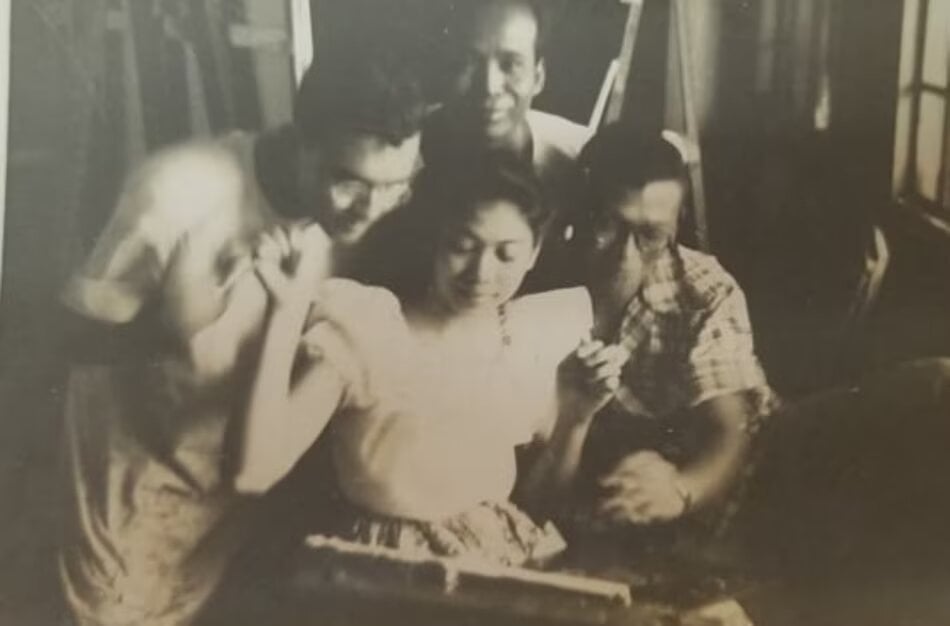
The post-war Padre Faura UP campus, where Sansó and his batchmates spent their first years, was in worse shape. Like the rest of Manila, it had not yet recovered from the massive damage wrought by World War II. The walls and classical columns of the buildings were heavily pockmarked from the shelling, and hardly any facilities existed. Sansó recalls there wasn’t even any running water, and that he and his classmates had to use fruit juice from their baon to dilute their paints.
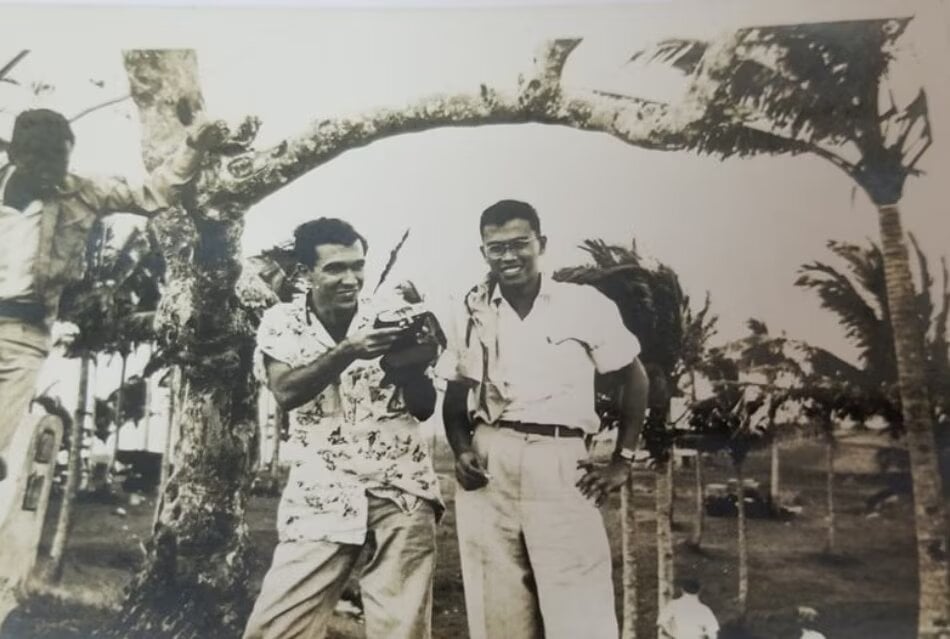
Yet, judging from pictures and Sansó’s stories, it was a happy existence. Even with rudimentary school amenities, UP was where Sansó blossomed. It was where he honed his skills and where he made lifelong friends, many of whom grew up to become masters, some eventually conferred the National Artist honor.
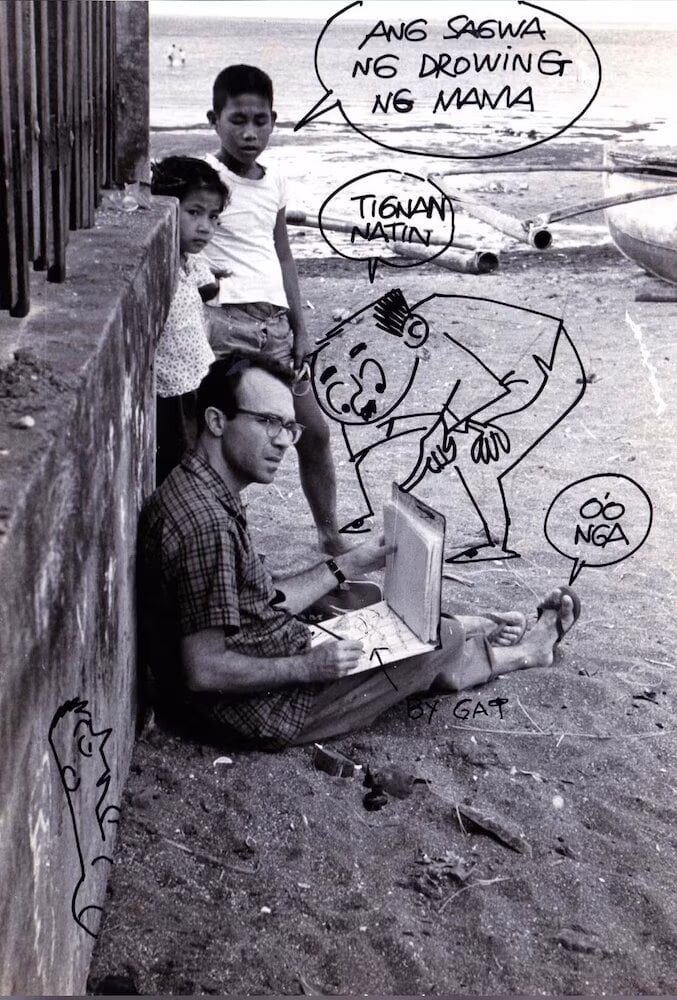
Sansó’s closest friend at UP was the cartoonist Larry Alcala. Also in his circle were Araceli “Cheloy” Limcaco-Dans, Rodolfo “Roddy” Ragodon, Celia Diaz-Laurel, Ben Osorio, Katy Yatco, Nenita Villanueva, and the talented campus beauty Josefina “Tipin” Rosales. In Sansó’s large class of Fine Arts majors, there were even more luminaries—the couturier Jose “Pitoy” Moreno, National Artist Napoleon Abueva, and Angel Cacnio, to name a few—proof that the training they received and the energy of the school contributed to the students’ formative years.
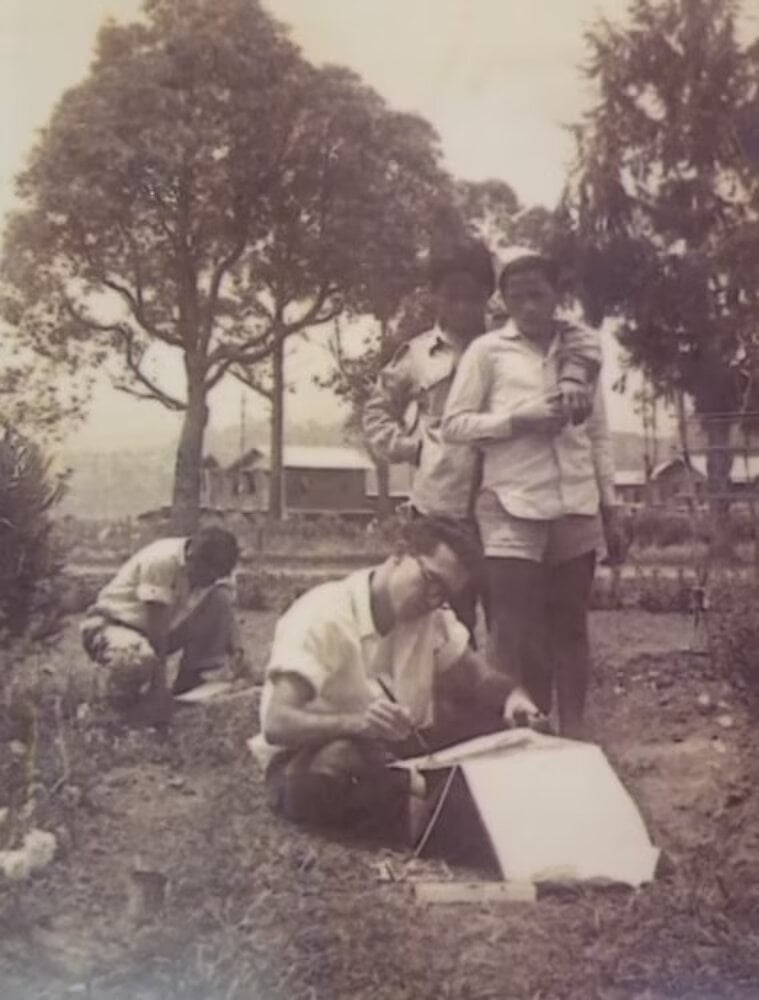
“In UP, Juvenal’s reticent personality bloomed into a socially adjusted, extroverted and playful figure, who was comfortable with people from different classes,” wrote Reuben Ramas Cañete, Ph.D. in the book La Definitiva Sansó: A Life Lived Thrice.
The UP lineup of Fine Arts teachers was just as stellar. Amorsolo was Dean of the department, and mentors included National Artist Guillermo Tolentino, Dominador Castañeda, Ireneo Miranda, and Dr. Toribio Herrera.
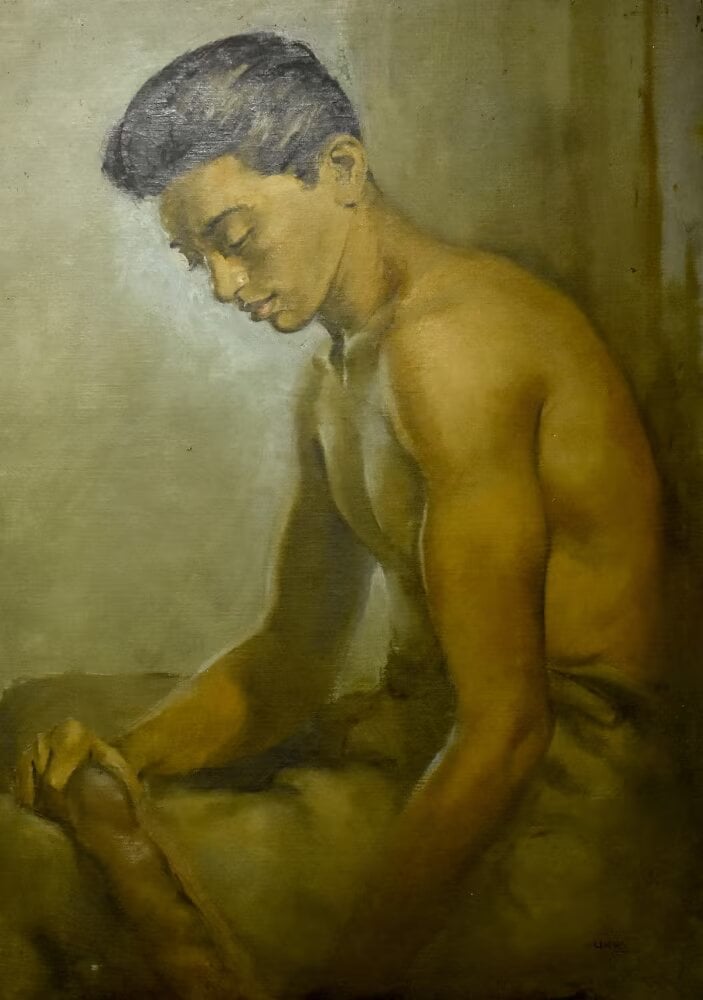
In the essay After the Deluge Comes the Dawn, Fundacion Sansó’s Francisco adds: “Under the great Fernando Amorsolo, Guillermo Tolentino, and other notable artists of that time, Sansó would hone his artistic skills further, even though the techniques taught were mostly answering to the practical needs of that time.”
Audiences may find it hard to connect Sansó’s mid- to late-1950s expressionist art from his “Black Period” to Amorsolo’s pastoral scenery and sunny optimism but Sansó himself acknowledged he shied away from such themes. His award-winning, gouache student work, “Incubus” is his entry into a darker period. Sansó’s depiction of a misshapen beggar was more terrifying than pitiful, and reflected the artist’s wartime traumas.
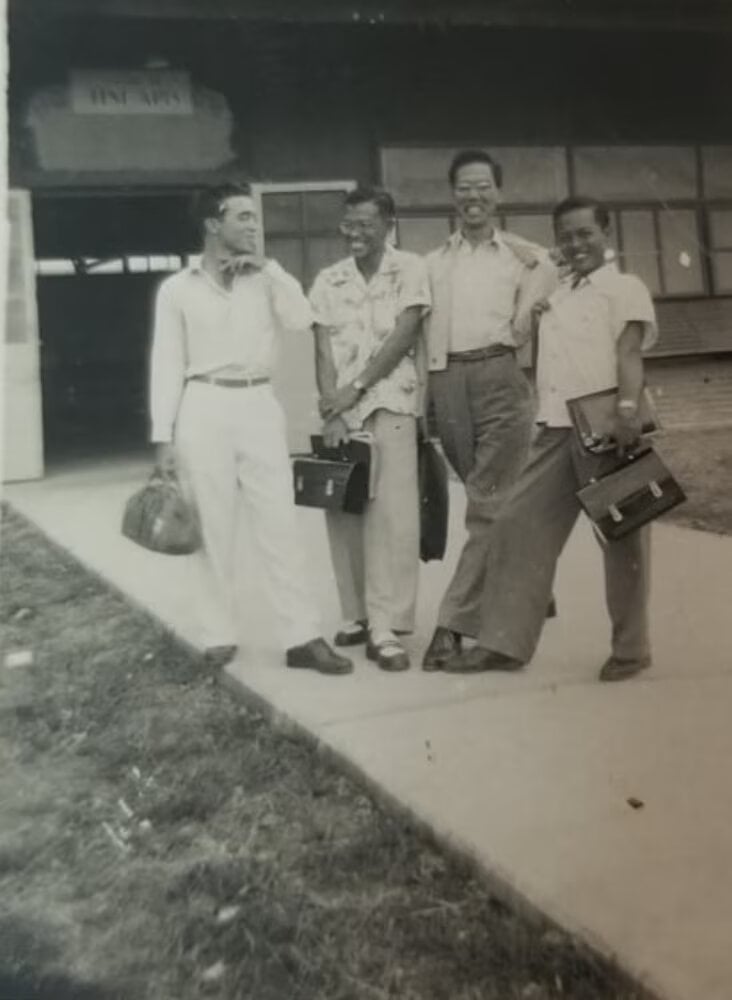
The young artist went on to win more awards as a student in 1951, namely from the Art Association of the Philippines, and the very first Shell National Student Art Competition. He eventually moved on to sit in on classes at the University of Santo Tomas, where the seeds of Modernism were already being planted. Soon thereafter, the Spanish-born artist was on a stipend, boarding a boat bound for further education abroad, much like future art students who sought to better their art and widen their perspectives.
For more information about the Leo Abaya Thesis Grant, email [email protected]. Fundacion Sansó is located at 32 V. Cruz St., San Juan; we are open Mon-Sat., 10am-3pm.
All photos courtesy of Fundacion Sanso.
Source: https://news.abs-cbn.com/ancx/culture/art/03/10/23/how-up-shaped-the-artist-juvenal-sans
